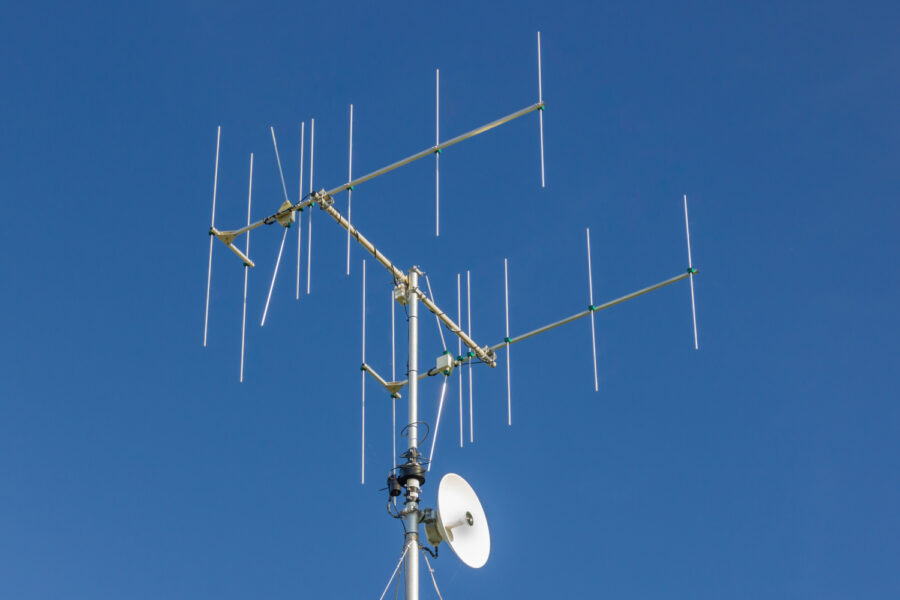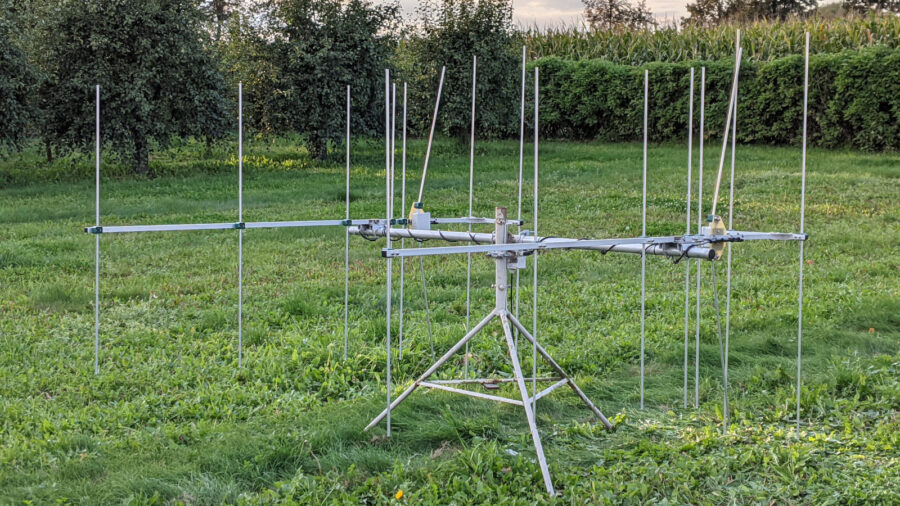Brian Beezley, K6STI designed a stacked pair of 8-el Yagis dedicated for the vertical polarization. His antenna optimizer managed to achieve 9-10 dBd gain and F/R ≥ 23 dB. I built them in the 2021 as a light-weight replacement for my 2×9-el stack.
Construction
The antenna files are available on Brian’s website: Vertically Polarized Yagi Stack
Bill of materials:
- Aluminium square booms: 20×20×1.5 mm.
- 10×1 mm aluminium tubes with insulated mounting brackets.
- 8 mm fiberglass rod for reflectors reinforcement.
- 10 mm Teflon rod for element ends inserts.
- Screws, nuts and washers (stainless).
- Plastic boxes, cable glands, ferrite chokes, BNC connectors, 75Ω coaxial cable.
- BNC T-adapter and CNT240 50Ω coaxial cable for 37.5Ω -> 75Ω matching.
The most difficult part of this construction is the driven element, which has to be mounted at a specific angle. I used Marlanvil 003.CS (IP65) box for the feedpoint protection. Bimetallic washer with copper and aluminum surface is recommended for the conductor joints.
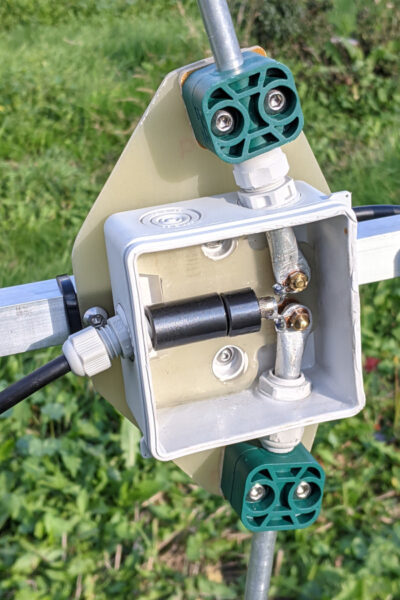
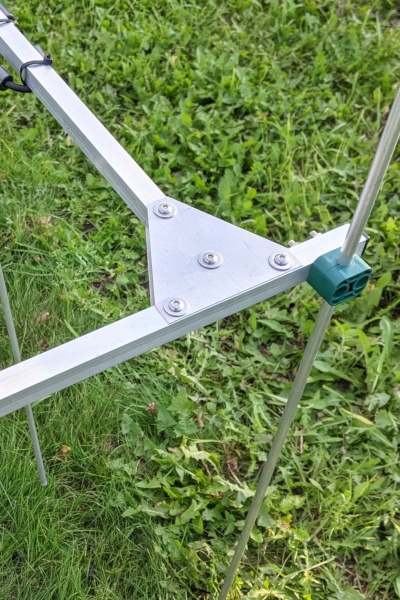
Although dipole impedance is the same as the coaxial cable (75 Ω), it requires coiled-coax balun or ferrite chokes to attenuate any unwanted shield current. I used multiple RRH-175-83-285 ferrites, each rated 242Ω at 100 MHz.
All elements should be placed on insulated mounting brackets. I used RSB RAPR-110 hydraulic tube clamps. Each tube end should be closed. I made Teflon inserts.
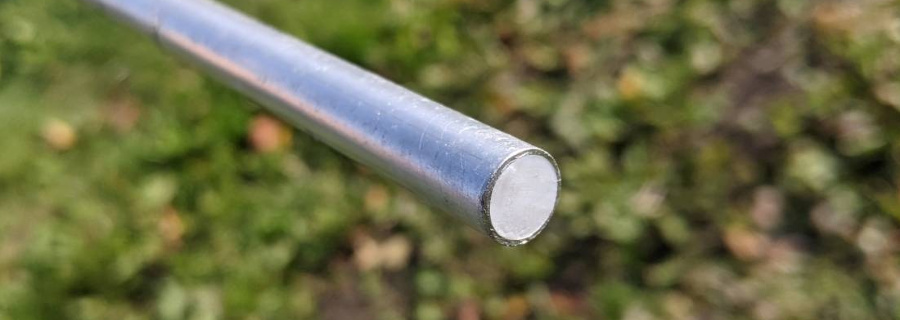
I combined both antennas with a T BNC adapter. The cable length between each antenna and the T adapter must be the same. Combining two 75Ω signals results in a 37.5 Ω output. Matching 37.5 Ω back to 75 Ω is done with a 1/4λ 50 Ω coax. I used Andrew CNT240 cable with 83% velocity ratio with a length of 300/98/4*0.83 = 63.5 cm.
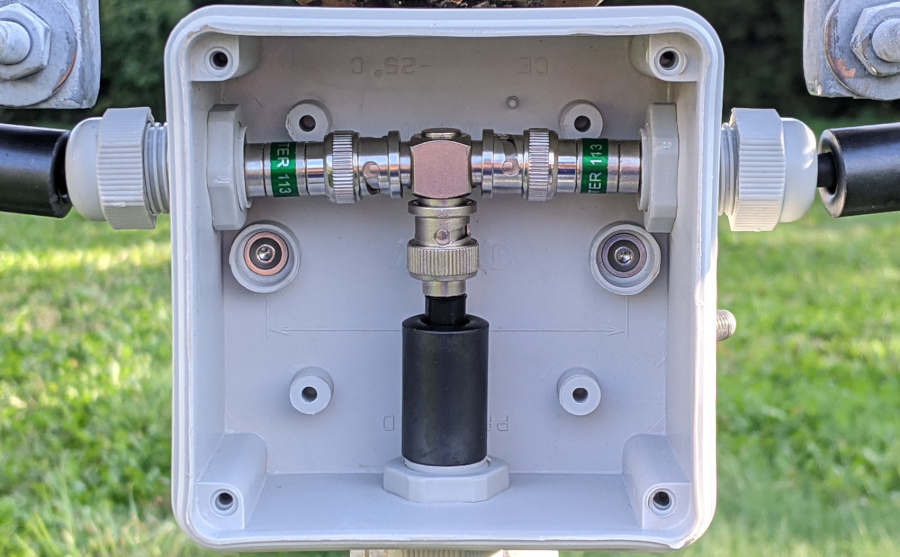
Measurements
I measured the return loss using NanoVNA V2 Plus4 calibrated to 75 Ω at the combiner.
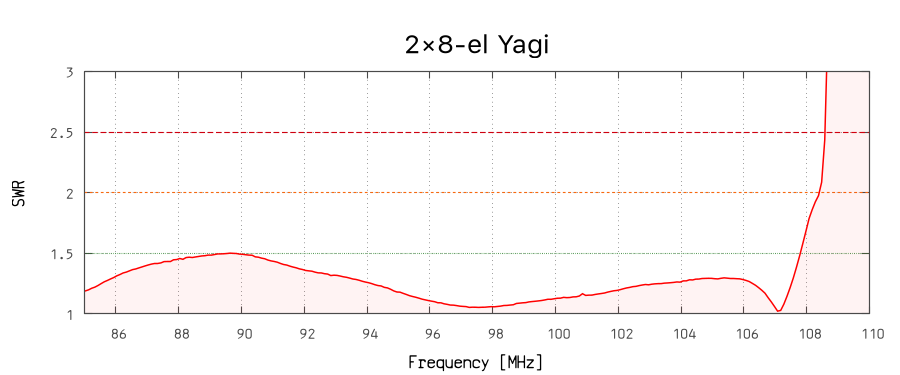
The SWR is excellent across the entire antenna bandwidth, up to 1.7 at 108 MHz.

